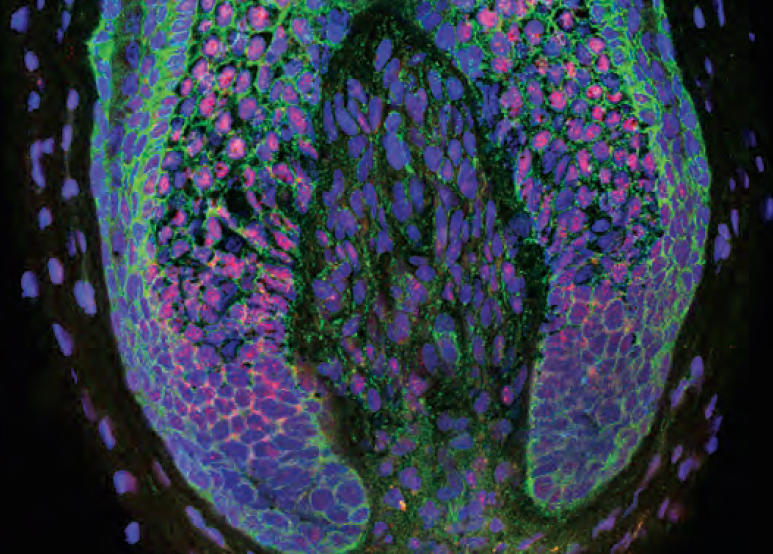Columbia scientists have done something that until now only snake-oil salesmen claimed was possible: they have induced human skin to sprout new hair from freshly formed follicles.
The scientists say the hair-regeneration method they have developed could help not only the large numbers of men who lose their hair; it could also provide the first suitable treatments for women with thinning hair and for people with certain diseases that cause baldness.
In a paper that appeared in the Proceedings of the National Academy of Sciences in December, researchers led by Columbia geneticist and dermatology professor Angela Christiano reported that they have generated human hair by exploiting the power of dermal papilla cells, a type of adult stem cell found, among other places, at the base of hair follicles. The scientists extracted these cells from seven balding men’s scalps, multiplied their numbers in petri dishes, and then injected the resulting stem-cell clusters into small patches of human skin that had been grafted onto the backs of mice. In most cases, the researchers write, human hair emerged from the previously smooth skin.
The scientists say that more work needs to be done before their technique can be tested in humans. The hair they have grown so far is not particularly robust or handsome. They have ideas for how to improve it; they believe that by tweaking their cell-culturing methods they might soon generate dermal papilla cells that do a better job of constructing follicles when introduced back into the skin.
“This approach has the potential to transform the medical treatment of hair loss,” says Christiano, who is an expert on the genetics of hair growth and skin health. “Current hair-loss medications tend to slow the loss of hair follicles or potentially stimulate the growth of existing hairs, but they do not create new hair follicles.”
Not just for men
Today, the only way to put hair on a person’s head where none exists is by hair transplantation. The most common type of transplantation involves surgically removing a strip of hair-covered flesh, typically from the back of the head, and grafting it onto the top. The procedure is painful, requires a long recovery, and does not increase the total amount of hair a person has, but merely relocates it. The treatment is also unsuitable for many patients. Women who lose their hair, for example, tend to see an even thinning across their scalp.
“About 90 percent of women with hair loss are not strong candidates for hair-transplantation surgery because they lack the hair to harvest,” says Christiano. “A lot of women seek hair transplants and get turned away for that reason.”
She and her colleagues are optimistic that their technique could eventually be used to restore the hair of men and women who have the most common form of hair loss, which is caused by a shrinking of hair follicles, as well as people with diseases that cause hair to fall out, such as scarring alopecia. They say it could even contribute to the development of more realistic biomedically engineered skin.
“One thing that is missing in skin substitutes that are put on burn patients is that they don’t have normal skin appendages like hair follicles and sweat glands,” says Colin A. B. Jahoda, a stem cell biologist at Britain’s Durham University and a coauthor of the paper. “This work could be equally important in terms of being able to create a much better, more functional skin replacement.”



